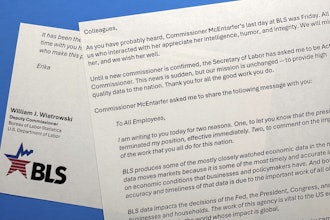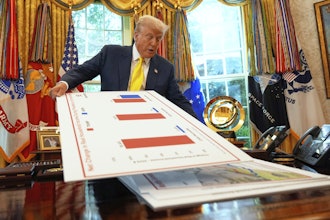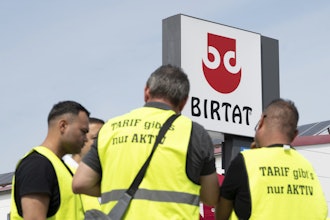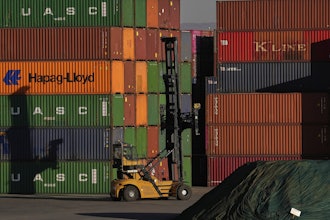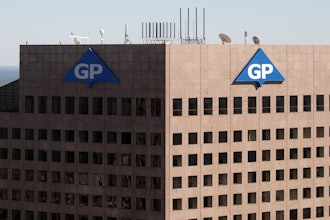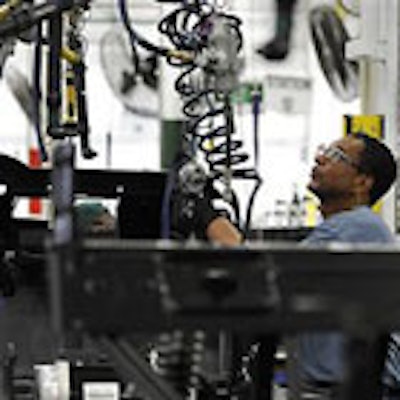
Economic activity in the manufacturing sector expanded in July for the 14th consecutive month, and the overall economy grew for the 62nd consecutive month, say the nation’s supply executives in the latest Manufacturing ISM Report On Business.
Manufacturing expanded in July as the PMI registered 57.1 percent, an increase of 1.8 percentage points when compared to June’s reading of 55.3 percent. July’s PMI reading of 57.1 is the highest reading since April 2011 when the PMI registered 58.9 percent. A reading above 50 percent indicates that the manufacturing economy is generally expanding; below 50 percent indicates that it is generally contracting.
“This month is a pretty strong number at 57.1, up 1.8 percentage points,” says Bradley J. Holcomb, CPSM, CPSD, chair of the ISM Business Survey Committee. “It’s the highest reading since April of 2011, and we have 17 of our 18 industries reporting growth, so it’s very broad based.”
A PMI in excess of 43.2 percent, over a period of time, generally indicates an expansion of the overall economy. Therefore, the July PMI indicates growth for the 62nd consecutive month in the overall economy, and indicates expansion in the manufacturing sector for the 14th consecutive month.
Holcomb stated, “The past relationship between the PMI and the overall economy indicates that the average PMI for January through July (54.4 percent) corresponds to a 3.7 percent increase in real gross domestic product (GDP) on an annualized basis. In addition, if the PMI for July (57.1 percent) is annualized, it corresponds to a 4.6 percent increase in real GDP annually.”
Orders, Production and Inventory
ISM’s New Orders Index registered 63.4 percent in July, an increase of 4.5 percentage points when compared to the 58.9 percent reported in June, indicating growth in new orders for the 14th consecutive month. A New Orders Index above 52.1 percent, over time, is generally consistent with an increase in the Census Bureau’s series on manufacturing orders (in constant 2000 dollars).
ISM’s Production Index registered 61.2 percent in July, which is an increase of 1.2 percentage points when compared to the 60 percent reported in June, indicating growth in production for the fifth consecutive month. An index above 51.1 percent, over time, is generally consistent with an increase in the Federal Reserve Board’s Industrial Production figures.
“New orders is really the engine that drives this whole system, and up 4.5 percentage points to 63.4 is a really solid number, indicating good orders and 13 of our industries reporting growth and only two reporting a decrease and those are not some of our larger industries,” says Holcomb. “So again, broad based, really solid number. Production as well is up 1.2 percentage points, keeping up with those new orders and also keeping the backlog of orders at a reasonable rate.”
ISM’s Backlog of Orders Index registered 49.5 percent in July, which is 1.5 percentage points higher than the 48 percent reported in June, indicating contraction in order backlogs for the second consecutive month. Of the 86 percent of respondents who reported their backlog of orders, 21 percent reported greater backlogs, 22 percent reported smaller backlogs, and 57 percent reported no change from June.
The Inventories Index registered 48.5 percent in July, which is 4.5 percentage points lower than the 53 percent registered in June, and indicates raw materials inventories are contracting for the first time since January 2014 when the index registered 44 percent. An Inventories Index greater than 42.8 percent, over time, is generally consistent with expansion in the Bureau of Economic Analysis’ (BEA) figures on overall manufacturing inventories (in chained 2000 dollars).
“Down 4.5 percentage points, dropping below 50 to 48.5 is a natural consequence of high production, number one,” says Holcomb. “And number two, supplier deliveries being slower and faster in terms of the slowing aspect. It’s a little hard to get your head around, but when we have slow supplier deliveries, that will generally mean inventories of raw materials are low, and in this particular environment that’s a good thing, because supplier deliveries being tight represents tightness and strong demand up and down the supply chain. So the bottom line is inventories are below 50 but still well controlled and we will likely see them go back up next month.”
Exports, Imports and Prices
ISM’s New Export Orders Index registered 53 percent in July, which is 1.5 percentage points lower than the 54.5 percent reported in June. July’s reading reflects growth in the level of exports for the 20th consecutive month.
ISM’s Imports Index registered 52 percent in July, which is 5 percentage points lower than the 57 percent reported in June. This month’s reading represents 18 consecutive months of growth in imports.
“Exports at 53 and imports at 52 show growth for the 20th consecutive month with exports and 18th consecutive month with imports, says Holcomb. “But they’re both down in terms of a slower growth rate than last month. The only one that catches my eye is imports down 5 percent. That’s a big drop, and it’s just something to watch. We can’t speculate as to why that would be – whether it would be in part due to geopolitical situations around the world – we just don’t know. But we’ll keep an eye on it.”
The ISM Prices Index registered 59.5 percent in July, which is an increase of 1.5 percentage points compared to the June reading of 58 percent. In July, 26 percent of respondents reported paying higher prices, 7 percent reported paying lower prices, and 67 percent of supply executives reported paying the same prices as in June. A Prices Index above 49.7 percent, over time, is generally consistent with an increase in the Bureau of Labor Statistics (BLS) Index of Manufacturers Prices.
Employment
ISM’s Employment Index registered 58.2 percent in July, which is an increase of 5.4 percentage points when compared to the 52.8 percent reported in June, and represents the 13th consecutive month of growth in employment. July’s employment reading of 58.2 is the highest reading since June 2011 when the Employment Index registered 60.3 percent. An Employment Index above 50.6 percent, over time, is generally consistent with an increase in the Bureau of Labor Statistics (BLS) data on manufacturing employment.
“The most recent jobs report confirms the bright outlook, showing that 28,000 manufacturing jobs were created in July—well above the 15,000 jobs per month average of the last 12 months,” says Dan Meckstroth, Chief Economist at MAPI. “Manufacturing activity is driven by consumer demand for durable goods and housing, expanding energy infrastructure, and firming business confidence in the future of U.S. manufacturing. The manufacturing infrastructure decline appears to have stabilized and firms are now expanding investments in structures and factory equipment.
Overall
Holcomb says that overall we saw a solid continuation of a trend that’s been set up and has been continuing all year, this being the high-point for the year. He says we are situated well for continuation of this trend, barring some difficult situations around the world.
“I think everything looks very solid and well balanced, particularly new orders, which as I said really drives this whole system. But if you go into the quotes, you can see that they are generally positive but they’re not super optimistic, if you will. And there’s a couple that refer to geopolitical situations representing a risk, and one says Russia’s demand for medical devices from the U.S. has dropped 40 percent, so there’s an actual impact cited by one of our companies. I think it goes without saying that we all are watching these various troubled spots around the world and hoping that things settle down.”











